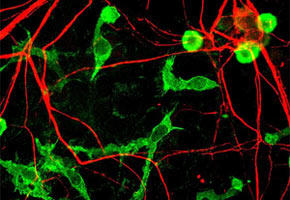

Scientists at the Human Genome Studies Center in São Paulo have identified a gene linked to autism that may offer clues to explain the difficulty that patients with the behavioral disorder have in social interactions.
Researchers at the Human Genome Studies Center (CEGH) have made important steps toward uncovering the genetic mechanisms of the autism spectrum.
Researchers at the Human Genome Studies Center (CEGH) have made important steps toward uncovering the genetic mechanisms of the autism spectrum.

Scientists at the Human Genome Studies Center in São Paulo have identified a gene linked to autism that may offer clues to explain the difficulty that patients with the behavioral disorder have in social interactions.
By Elton Alisson
Agência FAPESP – Researchers at the Human Genome Studies Center (CEGH) have made important steps toward uncovering the genetic mechanisms of the autism spectrum. These researchers have identified one of the many genes linked to the behavioral disorder, in addition to a genetic disorder that may be responsible for the difficulty that autistic individuals have with social interaction. Linked to Universidade de São Paulo’s Bioscience Institute, the CEGH is one of FAPESP’s Research, Innovation and Diffusion Centers (CEPID).
The results of the research were presented during the São Paulo Advanced School of Sciences: Advances in Research and Treatment of Autistic Behavioral held in early January at Federal de São Carlos (UFSCar).
The event, held under the auspices of the São Paulo Advanced School of Sciences (ESPCA) program sponsored by FAPESP, was organized by professor Celso Goyos of UFSCar’s Department of Psychology in partnership with Caio Miguel of California State University and Thomas Higbee of Utah State University in the United States.
In studying the chromosomes of roughly 200 autism patients treated at CEGH, the Brazilian researchers identified a genetic chromosome mutation in three of the genes. The alteration is a balanced translocation abnormality that involves the swapping of chromosome segments without the loss of genetic material.
In one of the three patients, the scientists observed that the genetic translocation prompted disruption of the TRPC-6 gene, which functions in controlling neuronal calcium channel function in the brain, particularly with regard to the junction between nuerons, the neuronal synapse.
“We imagined that because of this imbalance in the chromosomal rearrangement of patients with autism, the patient has a lower quantity of TRPC-6, which means that less calcium goes into neurons,” commented Maria Rita dos Santos e Passos-Bueno, a researcher at USP’s Human Genome Studies Center, in an interview with Agência FAPESP.
“The final result of this genetic alteration is a less ramified neuron, which makes fewer synaptic connections,” she explains.
According to the scientist, this genetic translocation, in which half of the TRPC-6 gene located on chromosome 11 is moved to chromosome 3, thus annihilating its function, is very rare and will not likely be found in other patients with autism.
The cellular signaling pathway that had been compromised by the genetic mutation linked to autism, however, could be common in other people affected by the neurological disorder. “In other patients with autism, the mutation could be found in another gene in the same cellular signaling pathway,” Passos-Bueno notes.
Personalized treatment
According to Passos-Bueno, one of the main advances in autism studies in the last four years was the realization that neurological disturbances are related to specific mutations in one or more genes that vary from one patient to another.
The challenges for the next few years will be to study the signaling pathways used by the genes related to autism in order to develop alternative treatments.
“We need to investigate whether the genes linked to autism in each patient are involved in one or more signaling pathways. If they are involved in several signaling pathways, then a different drug will have to be developed per patient. It will be personalized treatment,” she notes.
Another challenge will be to understand the function of the autism genes identified by the CEGH group so that they can be tested for any similarities to each other.
To this end, this group is utilizing iPS technology that allows stem cells from the dental pulp of autistic patients to become induced pluripotent stem cells, which can then develop into all of the cells found in an embryo, such as neurons.
Through a collaboration that began with research on TRPC-6 conducted by Brazilian-born Alysson Muotri of University of California at San Diego, the research group began to master the technique and established installations within CEGH to continue the project.
Researchers at the center also intend to utilize simpler models, such as Drosophila and zebra fish (Danio renio), to study the functioning of genes related to autism before beginning to work with more complex models, such as mice or iPS.
“The advantage of the simpler models is the possibility of testing combinations of several genes and introducing more than one mutation to analyze their relationship to neuronal function at a much lower cost than the iPS technology and the models utilized,” says Passos Bueno.
Republish
The Agency FAPESP licenses news via Creative Commons (CC-BY-NC-ND) so that they can be republished free of charge and in a simple way by other digital or printed vehicles. Agência FAPESP must be credited as the source of the content being republished and the name of the reporter (if any) must be attributed. Using the HMTL button below allows compliance with these rules, detailed in Digital Republishing Policy FAPESP.





